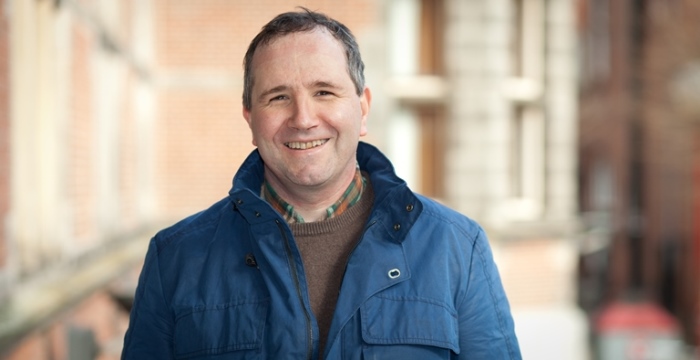Geert De Breucker
He studied classical languages, Egyptian hieroglyphics and cuneiform in Leuven, before starting a career in the headhunting business. But when a friend pointed out a vacancy for a PhD scholarship in Groningen, he quickly made up his mind. Six months later he found himself in the Netherlands doing research on the Babyloniaca by the Babylonian priest Berossos. An interview with Geert De Breucker.

Assyriology is not a common discipline. Can you tell us why you decided to study it?
I was very good at Latin and Greek at school and was intrigued by history. I therefore wasn’t sure which of those subjects to study at university. One of my teachers advised me to study ancient languages, as these had both the historical and linguistic elements.
At the University of Leuven, however, I discovered that there are languages even more ancient than Latin and Greek. Whereas most of my fellow students chose to follow a teacher education programme in the third year, I opted for Ancient Near East Studies instead. At first, I studied Egyptian hieroglyphics and cuneiform, which were used in ancient Mesopotamia, but later specialized in the latter.
How did you choose the subject of your dissertation?
The Ancient History Department in Leuven specializes in the Hellenistic period, which started with the Greek king Alexander the Great conquering most of the Middle East. I became very interested in this period and wrote my Master’s thesis on a related subject.
When I graduated I decided that my academic days were behind me. But when I was working for a headhunter, a friend doing a PhD in the field of Assyriology pointed out a vacancy for a PhD scholarship in Groningen. The Groningen Faculty of Arts had a programme focusing on transition periods. I submitted a research proposition based on a footnote in my Master’s thesis about Berossos, a Babylonian priest who used cuneiform sources to inform the Greeks about the history of Mesopotamia. Six months later I received a phone call saying I had secured the position.
How has your visual impairment affected your studies and the work on your dissertation?
Well, I consider myself more of a historian than an Assyriologist. Assyriologists decipher clay tablets excavated from archaeological sites, something I would probably not be able to do. Instead I base my research on edited sources that I can read with a magnification device. I can enlarge the letters as much as I need, and make them white against a black background. I also have a smaller device that I can bring to the library to read short pieces of text. Without this technology I could probably not have done my research.
Can you tell us a bit more about the theme of multiculturalism in your dissertation?
The question is, what exactly is multiculturalism? For my research I went to London, a city that is commonly referred to as multicultural. However, in this city, although there are indeed many different ethnicities, they live mostly separate lives in their own neighbourhoods.
In the big cities of the Ancient Near East, Alexandria and Babylon, the situation was similar, although one difference is that the natives of those cities were confronted with an ‘incoming’ culture. Some adjusted to this new Greek culture, but mostly in public life. This meant that they maintained their own identity in the private sphere, for example by observing their own religious traditions. However, if they encountered the Greek government they would ‘act’ Greek, and on many occasions even adopt a Greek name alongside their original one. In the case of Berossos, we know that this was his Greek name, which was based on his Babylonian name Bel-re´u-shunu. In my dissertation I was able to prove that his work is Babylonian in content, but that he ‘translated’ it to the Greek world by presenting it as a Greek work of history.
How does the war in Syria affect the scientific field of Assyriology?
There are still many unexcavated tablets in the Middle East. The current tragedy in Syria, but also in Iraq, means that acknowledged archaeological sites as well as those that have not yet been ‘officially’ discovered are being destroyed and plundered. I often receive worrying reports of new depredations. The profits of this are used to finance the war or line the pockets of private individuals.
For scholars it is quite a dilemma to know what to do with illegally obtained texts that are offered for sale. If they choose to publish them, they are acknowledging their value, which can be an incentive for criminals to steal more texts. On the other hand, if they refuse to publish them, the texts disappear in private collections and are lost to the academic world.
Another problem that arises is that the context of a tablet is lost when it is not excavated in a scientific way. In essence, a text is an object and the archaeological context is important if you want to understand it fully. Crucial information, for example, is whether it was found in a temple or a private residence, or in which layer of the ground it was buried. The people who plunder a site do not concern themselves with these factors, but just take the object with them.
In the end, most scholars refrain from publishing illegally obtained texts, as they believe this is the more ethical thing to do.
